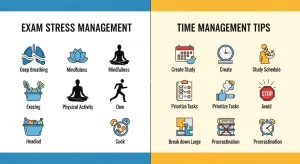When it comes to fat loss, choosing the right workout can make or break your fitness journey. Two of the most popular and effective training methods today are HIIT (High-Intensity Interval Training) and functional training. Both promise impressive results, but which one actually delivers faster fat loss?
If you’re tired of endless hours on the treadmill with minimal results, you’re in the right place. This comprehensive guide will break down everything you need to know about HIIT vs functional training for fat loss, helping you make an informed decision based on science, not just fitness trends.
The Ultimate Guide to the Best Workout Apps and Online Classes in 2025
What is HIIT Training?
High-Intensity Interval Training (HIIT) alternates between short bursts of intense exercise and brief recovery periods. HIIT burns more total calories during your workout than comparable cardio workouts in half the time, making it incredibly time-efficient for busy individuals.
A typical HIIT session might include:
- 30 seconds of burpees
- 15 seconds rest
- 30 seconds of mountain climbers
- 15 seconds rest
- Repeat for 15-20 minutes
Key Benefits of HIIT for Fat Loss
HIIT training offers several advantages for those seeking rapid fat loss:
Afterburn Effect (EPOC): HIIT has been shown to burn more calories in a shorter amount of time than many other training methods, helping to accelerate fat loss. Your body continues burning calories for up to 24 hours post-workout.
Time Efficiency: Most HIIT sessions last 15-30 minutes, perfect for people with busy schedules who want maximum results in minimum time.
Setting Up an Effective Home Gym: Complete 2025 Guide
Cardiovascular Benefits: HIIT helps improve oxygen consumption, and improve many health markers such as blood sugar, blood pressure, and resting heart rate.
Metabolic Boost: The intense nature of HIIT training elevates your metabolism significantly, creating optimal conditions for fat burning.
Understanding Functional Training
Functional training focuses on exercises that mimic real-life movements, training multiple muscle groups simultaneously. Unlike isolation exercises, functional movements prepare your body for daily activities while burning calories efficiently.
Examples of functional exercises include:
- Squats and squat variations
- Deadlifts and Romanian deadlifts
- Push-ups and variations
- Lunges in multiple directions
- Farmer’s walks
- Turkish get-ups
Functional Training Benefits for Weight Loss
Functional training for weight loss offers unique advantages that traditional cardio cannot match:
Multi-Muscle Engagement: By engaging multiple muscle groups simultaneously – including large muscle groups, aka the calorie-burners of the body – functional training boosts metabolism and calorie burn during and after the workout.
Improved Movement Quality: Functional exercises enhance your movement patterns, making daily activities easier while continuously burning calories through improved efficiency.
Strength and Cardio Combined: The dynamic nature of functional exercises also improves cardiovascular fitness, providing both strength training and cardio benefits in one session.
Sustainable Results: Functional training is great for weight loss since it uses compound movements. This means that you’ll burn more calories in one single exercise than you would doing just a single joint exercise.
Plant-Based Clean Eating Guide: Transform Your Health
HIIT vs Functional Training: Fat Loss Comparison
Calorie Burn During Exercise
HIIT Training: Burns 300-450 calories in a 30-minute session, with continued calorie burn for hours afterward due to the afterburn effect.
Functional Training: Burns 250-400 calories per 30-minute session, with moderate post-exercise calorie burn depending on intensity and complexity of movements.
Long-Term Fat Loss Effectiveness
Research shows mixed results when comparing these training methods. HIIT is not superior to continuous aerobic training in reducing body fat or abdominal visceral fat in individuals characterized by excess weight, suggesting that consistency matters more than training type.
However, both HIIT and functional training had positive effects on body composition promotion regarding the reduction of the body fat percentage.
Muscle Preservation and Building
HIIT: Primarily focuses on cardiovascular fitness and calorie burn, with limited muscle-building potential.
Functional Training: Focuses on compound movements that engage multiple muscle groups simultaneously. This not only helps you build lean muscle but also promotes fat loss. The more muscle you have, the higher your resting metabolic rate.
Immune-Boosting Nutrition Trends
Which Training Method Should You Choose?
Choose HIIT If You:
- Have limited time (15-30 minutes per session)
- Want maximum calorie burn in minimal time
- Enjoy high-intensity, challenging workouts
- Are primarily focused on cardiovascular fitness
- Want to break through fat loss plateaus
Choose Functional Training If You:
- Want to build strength while losing fat
- Prefer varied, movement-based workouts
- Need to improve movement quality and reduce injury risk
- Have joint issues that make high-impact exercise challenging
- Want sustainable, long-term fitness improvements
Combining HIIT and Functional Training
Why choose just one? Functional fitness can build a strong foundation of strength and mobility, while HIIT can enhance cardiovascular health and promote fat loss. Many fitness experts recommend combining both approaches for optimal results.
Sample Weekly Schedule:
- Monday: Functional training (45 minutes)
- Tuesday: HIIT (20 minutes)
- Wednesday: Rest or light activity
- Thursday: Functional training (45 minutes)
- Friday: HIIT (20 minutes)
- Weekend: Active recovery or longer functional training session
Wearable Health Trackers for Daily Wellness
Maximizing Your Fat Loss Results
Nutrition Considerations
Regardless of your training choice, fat loss occurs when you maintain a caloric deficit. Focus on:
- Whole foods and lean proteins
- Adequate hydration
- Proper meal timing around workouts
- Consistent eating patterns
Recovery and Consistency
Both training methods require adequate recovery:
- 48-72 hours between intense sessions for the same muscle groups
- 7-9 hours of quality sleep nightly
- Stress management techniques
- Regular movement on rest days
Progressive Overload
Continuously challenge your body by:
- Increasing intensity or duration gradually
- Adding complexity to functional movements
- Reducing rest periods in HIIT sessions
- Incorporating new exercise variations
Intermittent Fasting 101: Benefits and Tips
FAQ Section
Is HIIT or functional training better for beginners wanting to lose fat?
Functional training is generally better for beginners because it focuses on proper movement patterns and builds a foundation of strength. Beginners can start with bodyweight functional exercises and gradually increase intensity. HIIT can be overwhelming for newcomers and may increase injury risk without proper fitness foundation.
How often should I do HIIT vs functional training for optimal fat loss?
For HIIT training, limit sessions to 3-4 times per week maximum to allow proper recovery. Functional training can be performed 4-6 times weekly since it’s generally less taxing on the nervous system. The key is listening to your body and ensuring adequate recovery between intense sessions.
Can I lose belly fat faster with HIIT or functional training?
Neither training method can specifically target belly fat, as spot reduction is impossible. However, both HIIT and functional training contribute to overall fat loss, which will eventually reduce abdominal fat. The more muscle you have, the higher your resting metabolic rate, which means you’ll burn more calories at rest, making functional training slightly advantageous for long-term fat loss.
Which burns more calories: a 30-minute HIIT session or functional training?
A 30-minute HIIT session typically burns more immediate calories (300-450) compared to functional training (250-400). However, functional training boosts metabolism and calorie burn during and after the workout through increased muscle engagement, potentially equalizing the total caloric expenditure over 24 hours.
Is it safe to combine HIIT and functional training in the same week?
Yes, combining HIIT and functional training is safe and effective when programmed correctly. Allow 24-48 hours between intense sessions, focus on different muscle groups on consecutive days, and prioritize sleep and nutrition. This combination provides both immediate calorie burn and long-term metabolic benefits.
How Drinking Enough Water Can Transform Your Health
The Bottom Line
Both HIIT and functional training are highly effective for fat loss, but they work through different mechanisms. HIIT provides rapid calorie burn and cardiovascular benefits in minimal time, while functional training builds lean muscle mass and improves movement quality for sustainable weight management.
The best choice depends on your fitness level, time availability, preferences, and long-term goals. For optimal results, consider incorporating both training methods into your routine, ensuring adequate recovery and maintaining a slight caloric deficit through proper nutrition.
Remember, the most effective fat loss workout is the one you’ll consistently perform. Whether you choose HIIT, functional training, or a combination of both, consistency and progressive overload are your keys to success.
Ready to transform your body with the perfect training program?
Check out our recommended functional training equipment and HIIT workout guides to get started today. [Insert affiliate link here] – Get 20% off your first order and begin your fat loss journey with the right tools.











